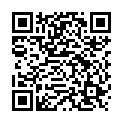|
|
|
| Module code: KIB-NRTG |
|
|
4V+2P (6 hours per week) |
|
7 |
| Semester: 2 |
| Mandatory course: yes |
Language of instruction:
German |
Assessment:
[still undocumented]
|
KIB-NRTG (P222-0022) Computer Science and Communication Systems, Bachelor, ASPO 01.10.2021
, semester 2, mandatory course
KIB-NRTG (P222-0022) Computer Science and Communication Systems, Bachelor, ASPO 01.10.2022
, semester 2, mandatory course
|
90 class hours (= 67.5 clock hours) over a 15-week period.
The total student study time is 210 hours (equivalent to 7 ECTS credits).
There are therefore 142.5 hours available for class preparation and follow-up work and exam preparation.
|
Recommended prerequisites (modules):
KIB-MAT1 Mathematics 1
KIB-PTG Physical and Technical Foundations
[updated 10.10.2024]
|
Recommended as prerequisite for:
|
Module coordinator:
Prof. Dr. Albrecht Kunz |
Lecturer: Prof. Dr. Albrecht Kunz
[updated 01.10.2022]
|
Learning outcomes:
After successfully completing this course, students will have obtained sound basic knowledge and system expertise in the field of communication technologies. Students will acquire the skills needed to implement software for use in communication systems based on the basic principles of communications engineering.
They will become familiar with the concepts and systems of communications engineering, enabling them to work independently with new future standards. This will become more and more important in the course of their professional lives and aid them in driving innovative developments in the diverse fields of communications technology and embedded systems, for example.
Through hands-on work in the practical part of the course, students will learn to apply the knowledge they have acquired in the lecture to concrete tasks, visualize it with simulation tools and then present their work results. In this way, several core competencies are acquired: visualization and the successful presentation of scientific and technical content, as well as the mastery of simulation tools.
By simulating, preparing and presenting their simulation results together in small groups, students will also learn how to work in groups (team skills).
[updated 19.02.2018]
|
Module content:
1. Reference and architectural models in communications engineering
1.1 OSI reference model for telecommunication
1.2 Layers of the OSI model, interaction with adjacent layers
2. Basics of the signal theory, the information theory and signal processing
2.1 Signal properties
2.2 Time and frequency domain signal display, bandwidth
2.3 Complex signal display
2.4 Linear filters
2.5 Filter coefficients, impulse response, amplitudes and phase response
2.6 Digitalization of analog signals, sampling theorem, AD/DA conversion
2.7 Periodic signals (Fourier series development, spectral representation)
3. Introduction to electronics and semiconductor technology
3.1 Materials for the semiconductor industry
3.2 P- and n-doping, p-n junction
3.3 Diodes, mode of operation and characteristic curve, designs, operating point
3.4 Circuits with diodes (rectifier circuits, voltage stabilization, etc.)
3.5 Transistors, characteristics, transistor parameters, connection / operation, characteristic curve fields
3.6 Transistor amplifier circuits, characteristics (current and voltage amplification, bandwidth, etc.)
3.7 Electronic oscillators
4. Basic concepts of radio technology
4.1 Signal damping
4.2 Signal and noise power, signal-to-noise ratio (SNR)
4.3 Signal level, level calculation in dB
4.4 Principles of antenna technology, characteristics of antennas, radiation diagrams
4.5 Frequency bands, transmission paths (long/medium/shortwave, mobile and satellite radio)
5. Wired communication
5.1 Telegraph equations, transmission line theory, wave impedance
5.2 Standing waves on transmission lines, reflection and adaptation coefficient
5.3 Crosstalk on electrical cables
6. Modulation methods
6.1 Amplitude modulation
6.2 Digital modulation
7. Digital baseband transmission
7.1 Model of the digital transmission path
7.2 Transmission channel, noise interference (AWGN)
7.3 Detection, error probability, bit error rate (BER)
[updated 19.02.2018]
|
Teaching methods/Media:
Lecture: Board, projector, flipchart, demonstrations with mobile measuring equipment
Seminar: The seminar is accompanied by a lecture and supplemented by simulations on selected topics of the lecture. Under the guidance of a lecturer, students will independently carry out simulations in small groups using professional simulation tools (e. g. Mathworks MATLAB, Orcad PSPICE, etc.).
The simulation results will be prepared jointly by the student groups and then presented in the seminar for their fellow students.
[updated 19.02.2018]
|
Recommended or required reading:
Martin Werner: Nachrichtentechnik: Eine Einführung für alle Studiengänge, Vieweg Teubner
Eberhard Herter, Wolfgang Lörcher: Nachrichtentechnik, Hanser
Martin Meyer: Kommunikationstechnik, Springer Vieweg
Rudolf Mäusl, Jürgen Göbel: Analoge und digitale Modulationsverfahren. Basisband und Trägermodulation, Hüthig
Martin Werner: Digitale Signalverarbeitung mit MATLAB, Vieweg Teubner
Ulrich Stein: Programieren mit MATLAB, Hanser
Robert Heinemann: PSPICE Einführung in die Elektroniksimulation, Hanser
Holger Göbel: Einführung in die Halbleiter-Schaltungstechnik, Springer Vieweg
Alois Krischke: Rothammels Antennenbuch, DARC
[updated 19.02.2018]
|


